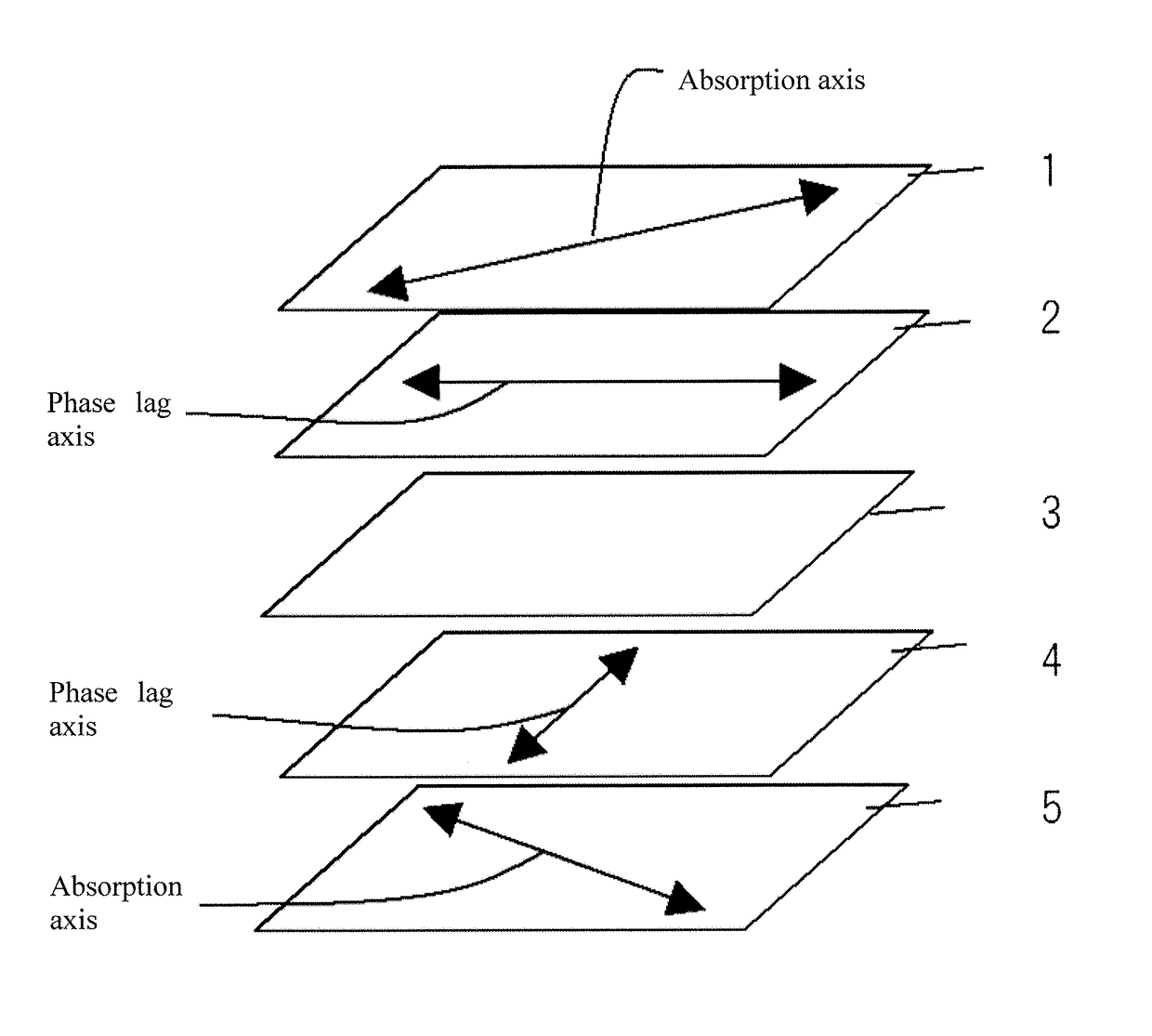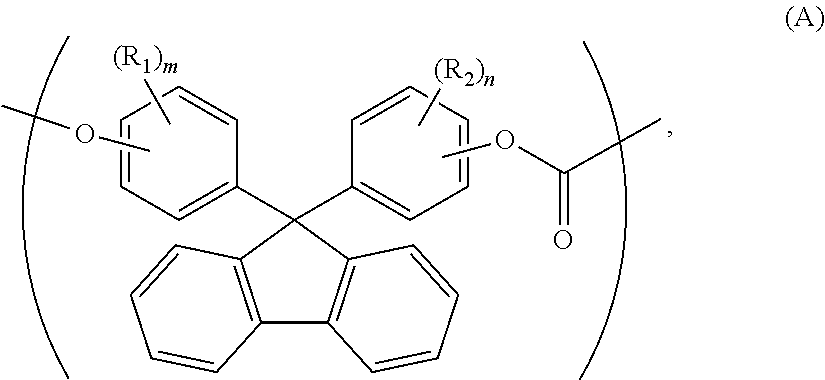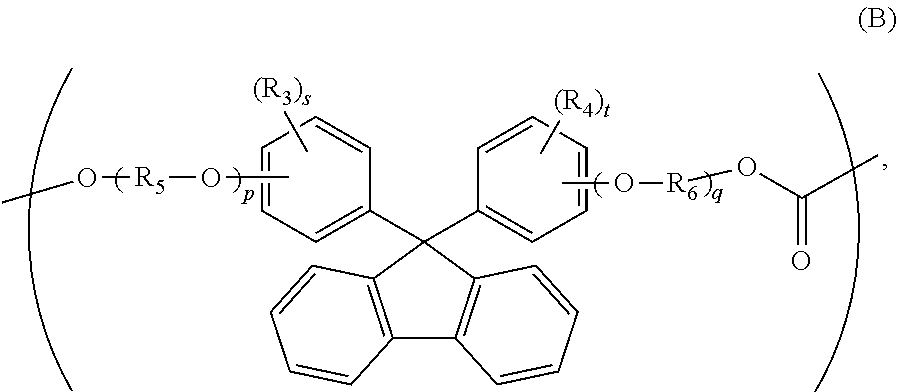Polycarbonate resin and optical film
a polycarbonate resin and optical film technology, applied in the field of polycarbonate resin and optical film, can solve the problems of increasing thickness and darkness, affecting the efficiency of /4 and /2 plates, and the wavelength at which the /4 plate and /2 plate can function is limited to a specific wavelength, etc., and achieves the effect of low photoelastic constant, high transparency, and desired wavelength dispersion characteristics
- Summary
- Abstract
- Description
- Claims
- Application Information
AI Technical Summary
Benefits of technology
Problems solved by technology
Method used
Image
Examples
example 1
[0111]In a nitrogen atmosphere, 14.8 parts of 9,9-bis(4-hydroxy-3-methylphenyl)fluorene (abbreviated as BCF hereinafter), 70.5 parts of 9-bis[4-(2-hydroxyethoxy)phenyl]fluorene (abbreviated as BPEF hereinafter), 58.4 parts of 3,9-bis(2-hydroxy-1,1-dimethylethyl)-2,4,8,10-tetraoxaspiro[5.5]undecane (abbreviated as SPG hereinafter), 85.7 parts of diphenyl carbonate, and 3.6×10−3 parts of tetramethylammonium hydroxide and 1.6×10−4 parts of sodium hydrogen carbonate as catalysts were heated under a nitrogen atmosphere to 180° C. and the resulting mixture was melted. Thereafter, the degree of decompression was adjusted to 13.4 kPa over 30 minutes. Then, the temperature was raised to 260° C. at a rate of 20° C. / hr and maintained at that temperature for 10 minutes, and the degree of decompression was adjusted to 133 Pa or lower over 1 hour. A reaction was carried out under stirring for a total of 6 hours.
[0112]After the reaction was completed, tetrabutylphosphonium dodecylbenzenesulfonate ...
example 2
[0114]Exactly the same operation as in Example 1 was repeated to obtain an aliphatic-aromatic polycarbonate copolymer except that 22.2 parts of BCF, 60.2 parts of BPEF, and 59.6 parts of SPG were used.
[0115]Then, a film was formed in the same manner as in Example 1. The evaluation results are shown in Table 1.
example 3
[0116]Exactly the same operation as in Example 1 was repeated to obtain an aliphatic-aromatic polycarbonate copolymer except that 25.2 parts of BCF, 51.6 parts of BPEF, and 63.2 parts of SPG were used.
[0117]Then, a film was formed in the same manner as in Example 1. The evaluation results are shown in Table 1.
PUM
| Property | Measurement | Unit |
|---|---|---|
| glass transition temperature | aaaaa | aaaaa |
| wavelengths | aaaaa | aaaaa |
| wavelengths | aaaaa | aaaaa |
Abstract
Description
Claims
Application Information
 Login to View More
Login to View More - R&D
- Intellectual Property
- Life Sciences
- Materials
- Tech Scout
- Unparalleled Data Quality
- Higher Quality Content
- 60% Fewer Hallucinations
Browse by: Latest US Patents, China's latest patents, Technical Efficacy Thesaurus, Application Domain, Technology Topic, Popular Technical Reports.
© 2025 PatSnap. All rights reserved.Legal|Privacy policy|Modern Slavery Act Transparency Statement|Sitemap|About US| Contact US: help@patsnap.com



